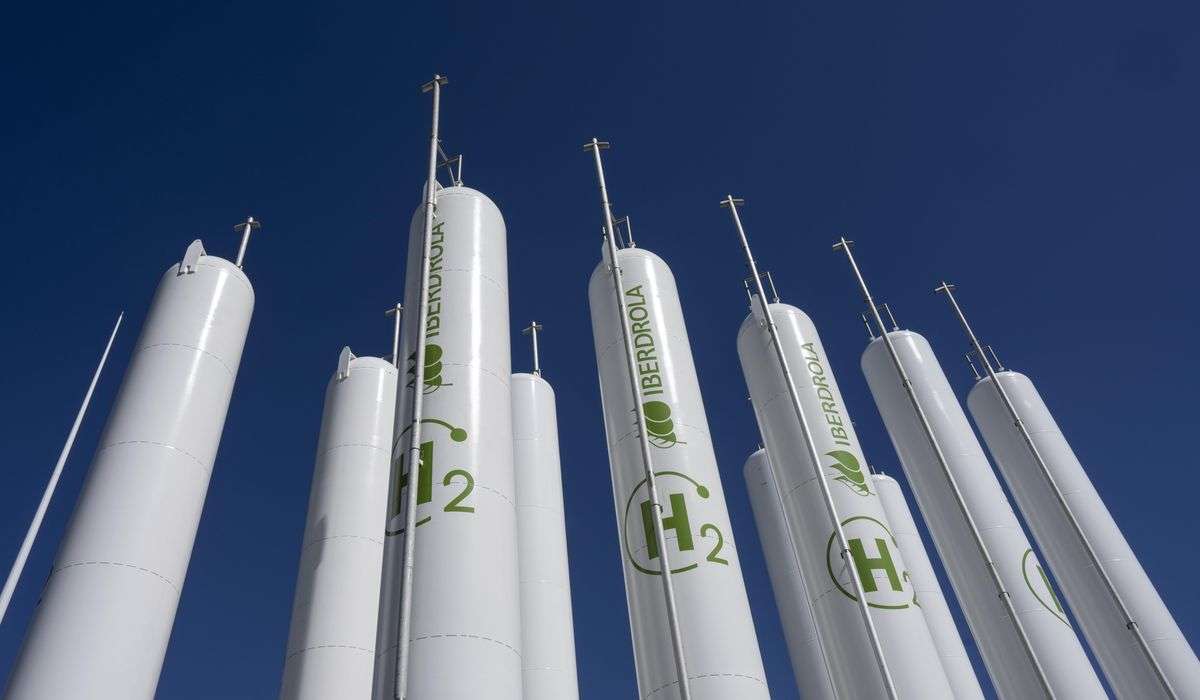Biden’s hydrogen tax credit unveiled as administration tries to jump-start industry

WASHINGTON — The Biden administration released its highly anticipated proposal for doling out billions of dollars in tax credits to hydrogen producers Friday, in a massive effort to build out an industry that some hope can be a cleaner alternative to fossil fueled power.
The U.S. credit is the most generous in the world for hydrogen production, Jesse Jenkins, a professor at Princeton University who has analyzed the U.S. climate law, said last week.
The proposal – which is part of Democrats’ Inflation Reduction Act passed last year – outlines a tiered system to determine which hydrogen producers get the most credits, with cleaner energy projects receiving more, and smaller, but still meaningful credits going to those that use fossil fuel to produce hydrogen.
Administration officials estimate the hydrogen production credits will deliver $140 billion in revenue and 700,000 jobs by 2030 – and will help the U.S. produce 50 million metric tons of hydrogen by 2050.
“That’s equivalent to the amount of energy currently used by every bus, every plane, every train and every ship in the US combined,” Energy Deputy Secretary David M. Turk said on a Thursday call with reporters to preview the proposal.
That may be a useful metric for comparison, but it’s a long way from reality. Buses, planes, trains and ships run on liquid fuels for which a delivery infrastructure exists, and no such system exists to deliver cleanly-made hydrogen to the places where it could most help address climate change. Those include steel, cement and plastics factories.
Hydrogen is being developed around the world as an energy source for sectors of the economy like that which emit massive greenhouse gases, yet are difficult to electrify, such as long-haul transportation and industrial manufacturing. It can be made by splitting water with solar, wind, nuclear or geothermal electricity yielding little if any planet-warming greenhouse gases.
Most hydrogen today is not made this way and does contribute to climate change because it is made from natural gas. About 10 million metric tons of hydrogen is currently produced in the United States each year, primarily for petroleum refining and ammonia production.
As part of the administration’s proposal, firms that produce cleaner hydrogen and meet prevailing wage and registered apprenticeship requirements stand to qualify for a large incentive at $3 per kilogram of hydrogen. Firms that produce hydrogen using fossil fuels get less.
The credit ranges from $.60 to $3 per kilo, depending on whole lifecycle emissions.
One contentious issue in the proposal was how to deal with the fact that clean, electrolyzer hydrogen draws tremendous amounts of electricity. Few want that to mean that more coal or natural gas-fired power plants run extra hours. The guidance addresses this by calling for producers to document their electricity usage through “energy attribute certificates” – which will help determine the credits they qualify for.
Rachel Fakhry, policy director for emerging technologies at the Natural Resources Defense Council called the proposal “a win for the climate, U.S. consumers, and the budding U.S. hydrogen industry.” The Clean Air Task Force likewise called the proposal “an excellent step toward developing a credible clean hydrogen market in the United States.”
But Marty Durbin, the U.S. Chamber of Commerce’s senior vice president for policy, said the guidance released today “will stunt the growth of a critical industry before it has even begun” and his organization plans to advocate during the public comment process “for the flexibility needed to kickstart investment, create jobs and economic growth, and meet our decarbonization goals.”
He accused the White House of failing to listen to its own experts at the Department of Energy.
The American Petroleum Institute said in a statement that “hydrogen of all types” is needed and urged the administration to foster more flexibility for hydrogen expansion, not less.
The Fuel Cell & Hydrogen Energy Association includes more than 100 members involved in hydrogen production, distribution and use, including vehicle manufacturers, industrial gas companies, renewable developers and nuclear plant operators. Frank Wolak, the association’s president, said it’s important the industry be given time to meet any provisions that are required for the top tier of the credit.
“What we can’t have is is an industry that is stalled because we have imposed requirements that the marketplace is not ready to fulfill,” Wolak said, particularly with the time it takes to bring new renewable resources online.
If the guidance is too restrictive, he said, “you’ll see a much smaller, if not negligible growth in this industry and a failed opportunity to capitalize on the IRA.”
Other industry representatives welcomed the proposal.
Chuck Schmitt, president of SSAB Americas – a supplier of steel plates- said the proposal “supports SSAB’s leadership and innovation in the decarbonization of the steel industry. This clarifying language will help drive new technology investment and create clean energy jobs in the United States.”
___
Associated Press climate and environmental coverage receives support from several private foundations. See more about AP’s climate initiative here. The AP is solely responsible for all content.






